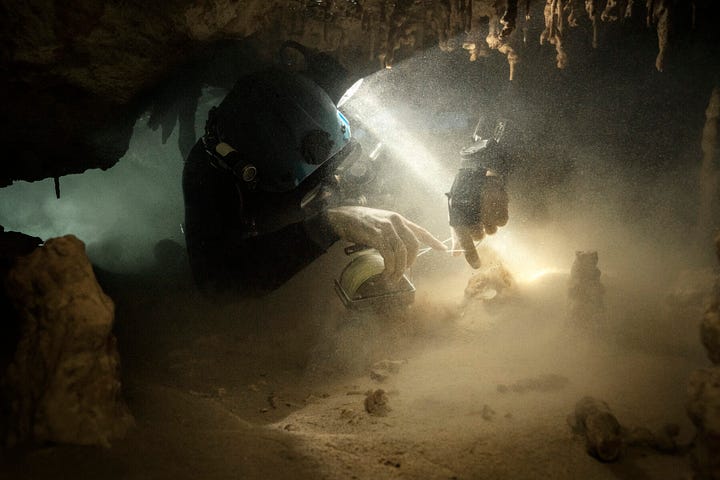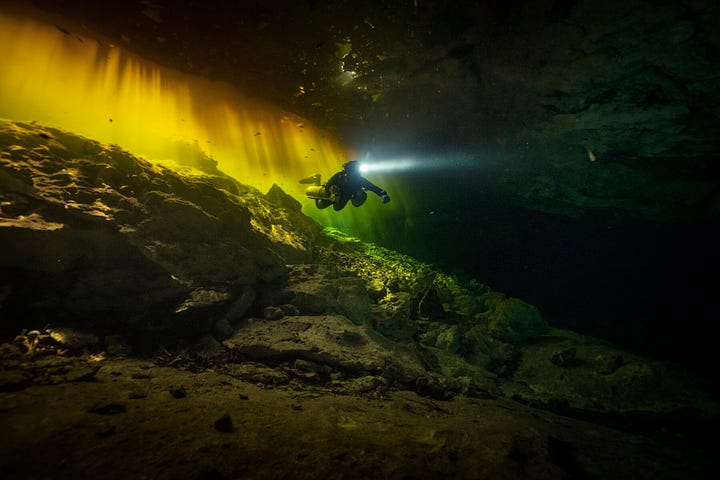Edition 23: The power of HUMAN Hour and why science isn’t always a good communicator, with explorer and environmentalist, Klaus Thymann
One of the most powerful ways Group Of Humans keeps its distributed community healthy and connected is through shared experiences.
This doesn’t just mean working on industry, Earth and even moon-spanning commercial projects, but also on things for the direct benefit and growth of us HUMANS as humans and where possible, the wider world.
When you’re as distributed as GOH is, with a community spread across countries and time zones far from each other, this can be a challenge. Perhaps our most important coming together is through the All Hands, held at the end of each month in what Rob, our founder, has dubbed ‘Human Hour’ when our collective time zones align to mean most (if not quite all) of us are awake and available.
The GOH All Hands is not your average hour of business updates and value alignment. Instead, Rob treats it as a chance to do something special – to widen horizons, provoke thought and debate, and bring new perspectives and experiences to the community. Few were more powerful than our recent October All Hands, when we were joined by explorer Klaus Thymann to talk about his incredible career and the vital work he’s currently doing in the submerged cave networks under Mexico’s Yucatan Peninsula.

Klaus has the kind of CV that reads like good fiction, except in his case it’s all true. He is a fellow of both the Royal Geographical Society and The Explorers Club – a result of his desire to always explore with specific reason, be it up mountains or underwater, on glaciers or in caves.
“I go to places that haven't been visited or have not been explored with the purpose of coming back with data… If I'm in the mountains for example, it’s not that I want to go to the top – I’m not on a trophy hunt but a data hunt.”
Recent expeditions have seen him discover and map new coral areas off the coast of Denmark, chart manatee habitats in Mexico, and calculate glacier volumes in the Democratic Republic of Congo using drone surveys, precision GPS and ground penetrating radar.



Yet Klaus is much more than ‘just an explorer’ and juggles many professions. Or as he puts it “I have more hats than hair”. And Klaus has a lot of hair. He is an environmental journalist for everyone from the Guardian to the New York Times: “I mainly cover environmental stories but I try to package them into something interesting… whatever the human aspect is.” As a professional photographer and Hasselblad ambassador he has photos in collections at MoMa San Francisco and has worked with the likes of Greta Thunberg.
He is also a scientist who “evolves around system thinking and interconnectivity” and takes “a multidisciplinary approach where mapping is often a focus.” And he is a director with a preference for feature length documentaries, which is where we joined his multifaceted career path in the underwater caverns below Quintana Roo as part of the Zero Change Project.




The focus of Klaus’s attention is on the halo-cline, an underground system below the region’s jungles and towns where the salt waters of the Caribbean Sea flow into the permeable rock that holds the fresh waters of the land mass, called an aquifer. This little understood area of interconnectivity plays an important role in the health of the surrounding ecosystem.
“Cities like Cancún and Tulum are not connected to the sewage system,” explains Klaus. “The sewage water flows directly into the aquifer, where it pollutes everything on the way out to the reef, where the nutrients kill the coral… And this is in a big UNESCO heritage site and marine protected area called the Sian Ka’an Biosphere.”
“Nobody has managed to show the connection between the caves, the aquifers and the lagoons. So deploying different scientific methods, we are trying to establish that connection, because that would be the first argument for protection. We are working with cave divers to swim through tunnels connecting to the lagoons. We are deploying thermal drones to see if we can find hidden cenotes and working with a company called Sunfish to map the lagoons. They’ve developed a UAV that’s actually for NASA to work under the ice of Europa, Jupiter's moon. It can hopefully map the lagoon so we can see if there's caves coming out into the lagoons.”
He’s even suggested putting trackers on the native manatee population so they can chart the network for them. “Once we start having a picture of this, we can find spots here where we can deploy dye tracing to receivers in the lagoons, and then hopefully we can show the connection. That's the science. But the communication and the policy work is where it gets difficult.” “Science,” as Klaus puts it, “isn’t always a good communicator.”
“So I'm working with local activists, scientists and producers Elena fortes and Oscar-nominated Sigrid Dyekjær on a long format documentary about exploration… that can hopefully blow people's minds and open the doors to what this underworld is. It's also a story about how this is a microcosmos for everything that's happening in society as a whole. We're working with Pulitzer for some some earned media, and the idea is to get this communication out to support and talk about the science. But of course, they're separate pieces of work because changing policy is difficult. And changing policy in Mexico is notoriously difficult.”
It’s here that the mutual benefit of Klaus presenting to GOH becomes clear.
“So the science has started, the filming has started, and the policy work is kind of moving forward, which we anticipate will take a few years, and it would be great to get some help with it.”
Looking to the varied skillsets, passions, experiences and connections the HUMANS have, Klaus calls out for scientific and technological input, funding sources and in particular, increased awareness across networks,
“because one of the really, really important things about this science is breaking down the silos to have a multidisciplinary approach. Working siloed won’t work, particularly for the documentary we’re making.”
In the following Q&A session it was clear this viewpoint resonated with every HUMAN present. Questions flowed freely - ranging from technical diving specifications to documentary techniques, environmental policy to innovative mapping technologies.
The best way to solve problems and make a real difference is through communication, collaboration and cooperation, playing on the strengths of our multidisciplinary skillset to target specific questions and challenges with focused, effective solutions. From space to environment, the world's most crucial scientific research deserves to be understood. This is where HUMANS will drive impact. Waste Not.



